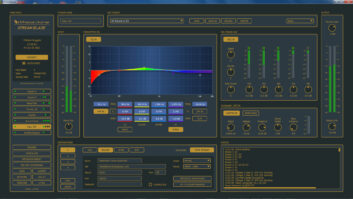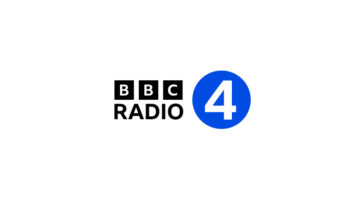A recent inquiry comes from an engineer in charge of three AM stations, with the studios in one building. Unfortunately, the building also housed one of the AM transmitters.
The engineer had tried a couple of car radios to get a clean signal, but was bothered most by the swamping effect of the co-located station.
Stuart Engelke with AM stations WMCA and WWDJ in New York wrote to [email protected] that feeding the local station’s modulation monitor using a Delta Electronics TCT Sampling Toroid will solve two problems.
First, the mod monitor will get a feed, regardless of whether the main or auxiliary transmitter is feeding the system. Second, the feed is coming from the toroid, not an external antenna that can pick up extraneous signals during low-power operation.
Stuart also suggested www.ccrane.com/am_antennas.asp for locating a loop antenna that can be oriented to null out the local signal, in the case of feeding the car radios. The site is a useful reference for listeners who have difficulty receiving your station.
. . .
(click thumbnail)Fig. 1 The pine tree inside this tower fence has pushed right through the wood.
It would be interesting to count the rings in the pine seen growing inside the tower fence of Fig. 1, just to discover how long that tree has been around.
The tree has deformed the fence. The photo is a good example of why engineers should be included in a due diligence for any station your company plans to acquire.
Show this picture to your station manager or owner, and make sure you are in the loop. If problems like this can be identified before settlement, escrow money to correct the violation(s) can be set aside.
Best of all, your upper management won’t look foolish buying a “pig in a poke.”

. . .
(click thumbnail)Fig. 2 The arrow shows a wasp trying to enter a transmitter building.
It’s wasp season. Fig. 2 shows a visitor in flight, attempting to enter a transmitter building. Take five minutes and give your building eaves, ATU and air hoods a good spritz of Raid or other brand of insect treatment.
The time you take in completing this one maintenance task will save you hours ridding your site of bees’ nests and troubleshooting failed satellite signals as summer commences.

. . .
Wheatstone Audioarts R-60 consoles use a meter lamp that looks like a fuse. They aren’t readily available except through the manufacturer.
Michael Glaser of LIRadiogroup found the bulbs at FELCO sales. The company is at (714) 712-6200.
The fuse-like bulbs are part number 19-29-39/6V and cost $2 each. The only snag is you must buy at least 50.
. . .
Hal Kneller is the director of radio engineering for WGCU Public Broadcasting at Florida Gulf Coast University.
Recently his Inovonics 530 FM Modulation Analyzer acted like it was going into oscillation. If he left the monitor on for any period of time, it would show blinking on the LED displays at a rapid rate.
Investigation showed one of the two 6800mfd 35VDC capacitors in the main power supply to be bad. Hal replaced both, because the cost was minimal; and the problem was solved.
This particular unit was only three years old and not housed in a hot environment. Hal surmises that the off-brand capacitors were just not up to quality.
Starting each troubleshooting session at the power supply is a pretty good bet. Look at the DC lines using a scope. Voltage fluctuations from normal, or AC ripple can wreak havoc in electronic circuits. Consider the following.
. . .
Let’s say you’ve decided to do some satellite troubleshooting because of loss of signal, interference or audio chirping. A typical installation might be using a Starguide II receiver that is a couple of years old.
Here are some points to check, compiled by Edd Monskie of Hall Communications stations WLPA(AM) and WROZ(FM) in Lancaster, Pa.
Remember the basics: check for wasp nests in the feed horn of the dish, and make sure the dish is aimed correctly.
Then check the coax to the dish as well as the jumpers. Look for water intrusion or corroded connectors.
Take a look at the LNB power. AC ripple on the LNB should be unreadable, but Edd has found cases in which the LNB voltage is right on 24VDC, but when the meter is switched to AC, the ripple measures anywhere from 1-2 mV and higher. Switch the LNB voltage to another receiver or another 24VDC supply with no AC ripple to solve the problems.
Edd says this is one test the satellite receiver providers miss. Remember, the LNB supply ripple should read less than l mV.
. . .
Gary Blau, engineering manager for Jefferson-Pilot’s WLYF(FM) in Miami, offers a suggestion to engineers concerned about the weight of the Orban Optimod 8400 and whether to support the rear of the unit.
Let physics work for you. Put the rack screws in the two bottom holes (as with any equipment). The rack ears will not crack, and a rear support is not necessary.
Of course, using rack screws for all the holes is preferable. But if you support any equipment using the two bottom rack holes you will be fine, unless otherwise recommended by the manufacturer.
There’s another benefit to using the bottom holes. As you support the equipment, screwing the rack bolts into the bottom holes first will help stabilize it. If you have had to mount an old Ampex 350 reel-to-reel machine by yourself, you know what Gary and I mean.
It’s a simple tip from two of us who learned our craft at the knees of seasoned engineers. Thanks, Gary, for reminding us that sometimes the simplest tips are among the best.
Submissions for this column are encouraged, and qualify for SBE recertification credit. Fax your submission to (703) 323-8044, or send e-mail to [email protected].












